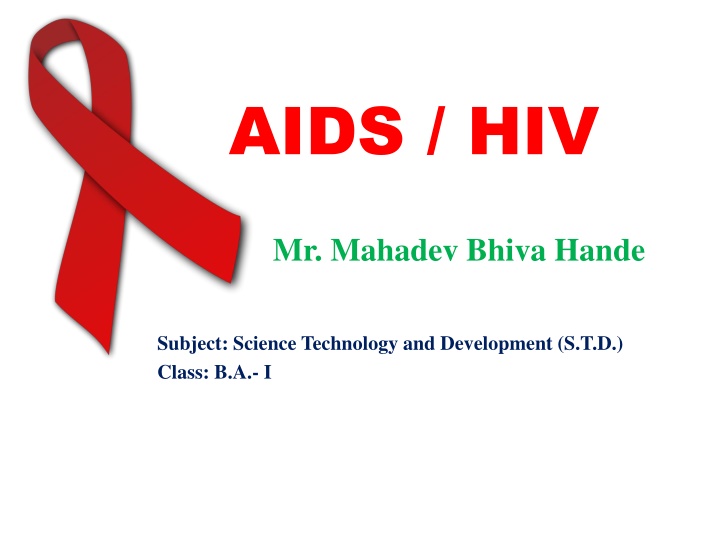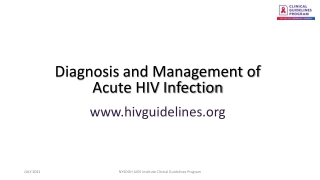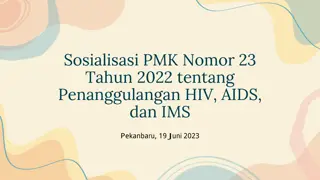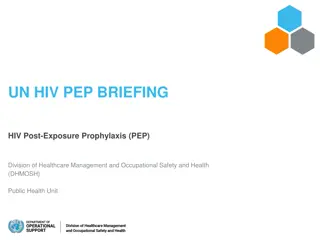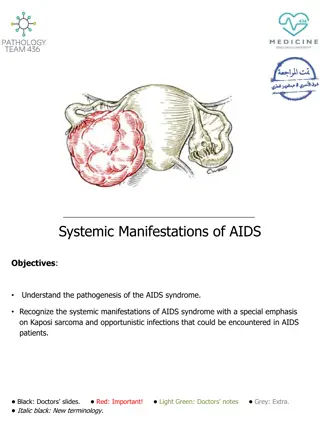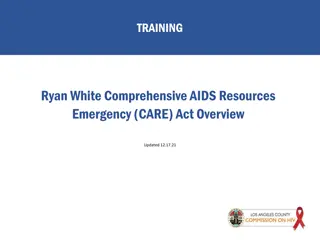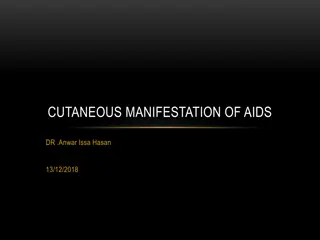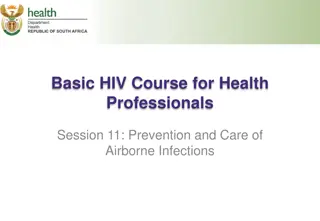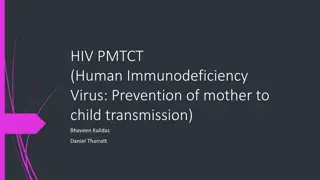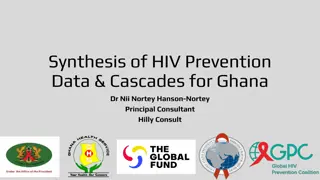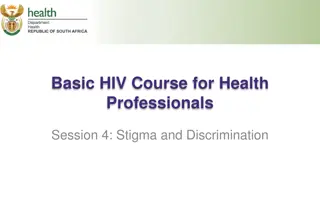AIDS/HIV: Origins, Symptoms, Transmission, and Prevention
Both HIV-1 and HIV-2 originated from non-human primates in West-central Africa, leading to the development of AIDS. Explore the signs, symptoms, transmission modes, testing methods, stages, and prevention strategies for HIV/AIDS. Learn about its impact on individuals and communities.
Download Presentation

Please find below an Image/Link to download the presentation.
The content on the website is provided AS IS for your information and personal use only. It may not be sold, licensed, or shared on other websites without obtaining consent from the author.If you encounter any issues during the download, it is possible that the publisher has removed the file from their server.
You are allowed to download the files provided on this website for personal or commercial use, subject to the condition that they are used lawfully. All files are the property of their respective owners.
The content on the website is provided AS IS for your information and personal use only. It may not be sold, licensed, or shared on other websites without obtaining consent from the author.
E N D
Presentation Transcript
AIDS / HIV Mr. Mahadev Bhiva Hande Subject: Science Technology and Development (S.T.D.) Class: B.A.- I
INTRODUCTION - Both HIV-1 and HIV-2 are believed to have originated in non-human primates in West-central Africa and were transferred to humans in the early 20th century. -AIDS was first clinically reported on June 5, 1981, with five cases in the United States -In 1983, two separate research groups led by Robert Gallo and Luc Montagnier declared that a novel retrovirus may have been infecting people withAIDS. DEFINATION : Adisease in which there is a severe loss of the body's cellular immunity, greatly lowering the resistance to infection and malignancy. Human immunodeficiency virus infection and acquired immune deficiency syndrome (HIV/AIDS) is a spectrum of conditions caused by infection with the human immunodeficiency virus.
What is AIDS / HIV? AIDS: AIDS: HIV : HIV : A : Acquired I : Immuno D : Deficiency S : Syndrome H: Human I : Immunodfeficiency V : Virus
SIGNS AND SYMPTOMS Unexplained fever Additionally, people with AIDS frequently have systemic symptoms such as prolonged fevers, sweats (particularly at night), swollen lymph nodes, chills, weakness, and unintended weight loss. Diarrhea is another common symptom, present in about 90% of people with AIDS. They can also be affected by diverse psychiatric and neurological symptoms independent of opportunistic infections and cancers.
TRANSMISSION TRANSMISSION 1. Sexual - Sexual contacts between people of the opposite sex. - Men who had sex with men (gay and bisexual). - Unprotected heterosexual contacts - Oral sex 2. Body Fluids - Drug use, needle stick injury Drug injection - Blood or blood product Transfusion - Organ and Tissue Transplantation - Tattoos, piercings and scarification - - - During delivery - - Through breast milk 3. Mother to Child - Mother to child during pregnancy
HIV TESTING: HIV/AIDS is diagnosed via laboratory testing and then staged based on the presence of certain signs or symptoms: by measuring HIV-RNA or p24 antigen. Diagnosed by PCR testing for HIV RNA or DNA, or via testing for the p24 antigen. STAGES OF HIV / AIDS: 1 2 3
PREVENTION: PREVENTION: Hi Prevention Starts with ME! A) - - - - B) Post-exposure - Mother-to-child: antiviral medications during pregnancy, bottle feeding/ breast feeding. - HAART- Highly Active Anti Retroviral Therapy: Anti retrivol drugs- AZT- Azathothymedene, elvitegravir, emtricitabine, tenofovir and the booster cobicistat. - Diet: higher intake of vitamin A, zinc, and iron Pre-exposure Prevention of Sexual contact: Use of Condom. To proper HIV testing blood use Tattoos (Gondhan), Acupuncture time use new synergies New synergies and needle use Stop AIDS keep the promISe
